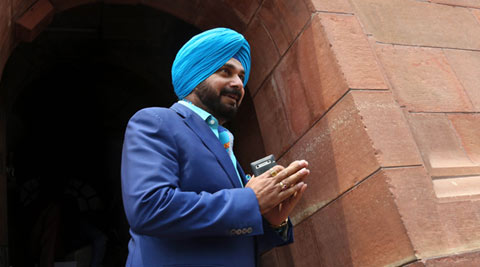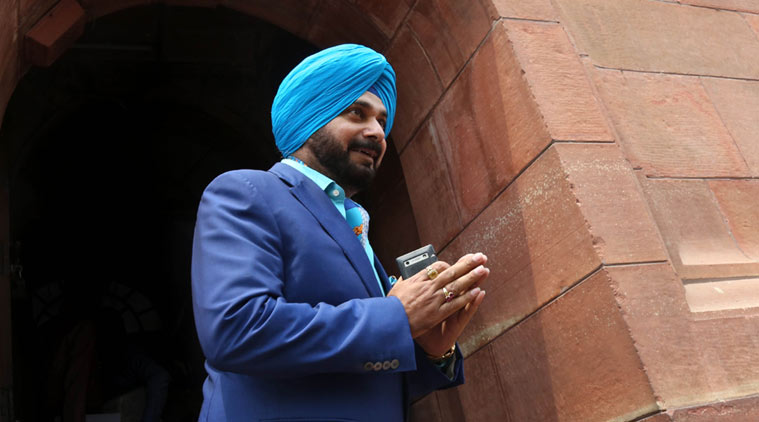Opinion Navjot Sidhu’s revolt has complicated the Punjab pre-poll scene
In the 2014 general election, the debutant AAP managed to win four seats, all of them in Punjab

 Has the three-year old party gained sufficient heft to defeat two of the oldest parties in India, which have cadres and traditional supporters across Punjab?
Has the three-year old party gained sufficient heft to defeat two of the oldest parties in India, which have cadres and traditional supporters across Punjab?
Navjot Singh Sidhu’s imminent exit from the BJP and the distinct possibility of him joining the AAP has once again drawn attention to the impending assembly elections in Punjab, where the incumbent Shiromani Akali Dal-BJP combine is facing a stiff challenge from the Congress and the AAP. The importance of the election lies in the fact that Punjab seems to be a state where both the AAP and the Congress have a realistic chance of securing victory.
This is particularly true for the AAP. In the 2014 general election, the debutant AAP managed to win four seats, all of them in Punjab. In the state’s 13 constituencies, the AAP finished third in eight.
Watch Video: Navjot Singh Sidhu Quits Rajya Sabha: What Next
If translated into assembly segments, the AAP was ahead of other parties in 34 of the 117 assembly constituencies in the state; 18 of them represented by the Akali Dal and 16 by the Congress. Since then the party has had its reverses: It lost two assembly by-elections badly and there was a largescale purge of volunteers and leaders, including two sitting MPs. But the AAP has since been energised by the massive crowd attending Arvind Kejriwal’s rallies in the state and a general feeling, fuelled by social media, that the party continues to be popular, especially among the state’s youth.
Has the three-year old party gained sufficient heft to defeat two of the oldest parties in India, which have cadres and traditional supporters across Punjab? The AAP still lacks a proper organisational setup, a state-level leadership and funds. In 2014, it benefited from voter fatigue with successive non-performing Congress and Akali regimes, that have alternated since 1992 except in 2012. Besides, the party ran a spirited and well-managed campaign raising all the critical issues facing the beleaguered state, like drugs and corruption. The honest or professional image and profile of many of its candidates also influenced voters to support the AAP.
WATCH VIDEO:Keystrokes: Navjot Singh Sidhu’s Reverse Sweep
Now, more than two and half years after, are these factors relevant or sufficient to help the AAP win a triangular contest? The Akali Dal led by Sukhbir Badal will go all out to win or at least not lose the election badly, a distinct possibility at the moment. The stakes are high even for the BJP, which wants both the Congress and the AAP defeated — a Congress win will be a setback to its declared agenda of realising a “Congress-mukt Bharat” while the top leaderships of the AAP and the BJP share a hostile relationship. The Congress has been on upswing after the belated elevation of Captain Amarinder Singh as the state unit president and potential chief minister candidate of the party. Singh has been touring and meeting people across the state under his “Halke Vich Captain” (Captain in assembly constituency) and “Coffee with Captain” campaigns, designed by the party’s poll strategist, Prashant Kishore. Like Parkash Singh Badal, Captain also has a social supp-ort base in all the three electoral regions of the state.
In this context, the AAP could benefit if Sidhu joins the party, a distinct possibility given the congratulatory tweets from the party leadership. So far party affairs in the state has been looked after by Sanjay Singh, a non-Punjabi. The three prominent faces of the party in the state, Bhagwant Mann, MP, Sucha Singh Chhotepur, the party’s state convenor, and H.S. Phoolka, do not have a pan-state support base. Sidhu, on the other hand, has state-wide recognition because of his sporting and media careers as well as his oratory. He is also perceived as an honest politician who joined politics to serve the people and who was denied the party ticket at the behest of the Badals. At a time when the AAP is eying the Sikh peasantry vote, Sidhu, who belongs to dominant Jat Sikh family, can be an asset for the AAP. It won’t be surprising if the AAP projects him as the face of the party campaign, bypassing the “old-timers” to negate the leadership advantage of the Congress and the Akali Dal.
(This article first appeared in the print edition under the headline ‘A Turning Pitch’)





